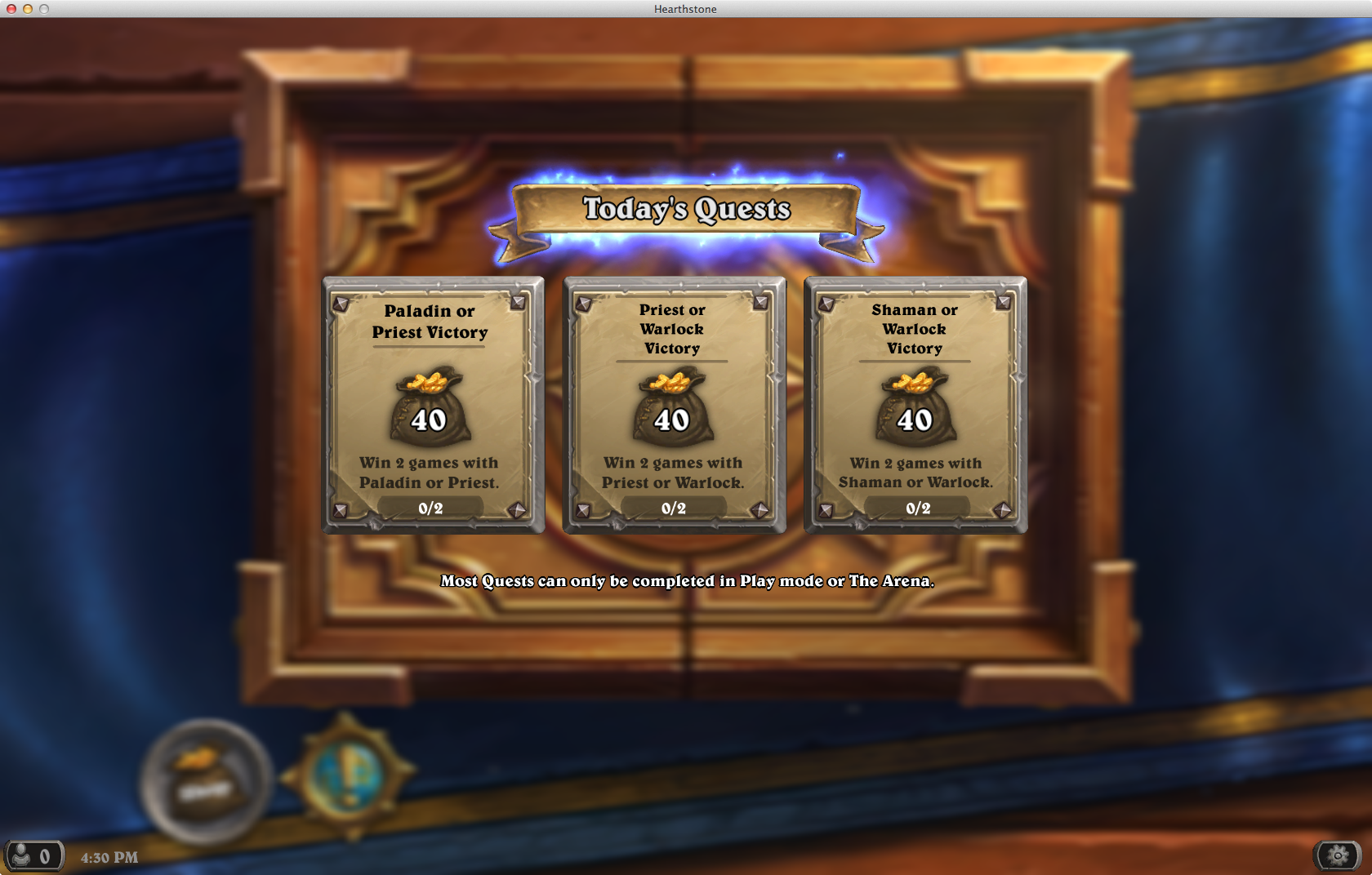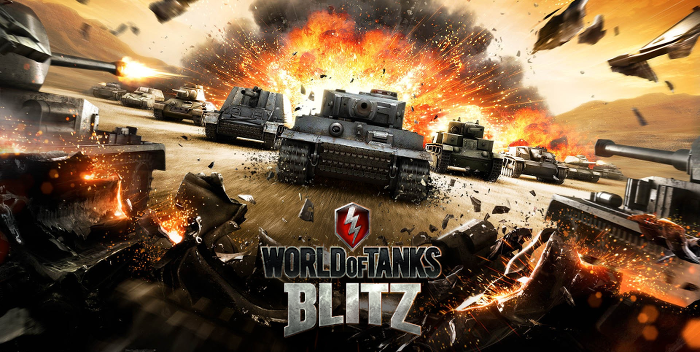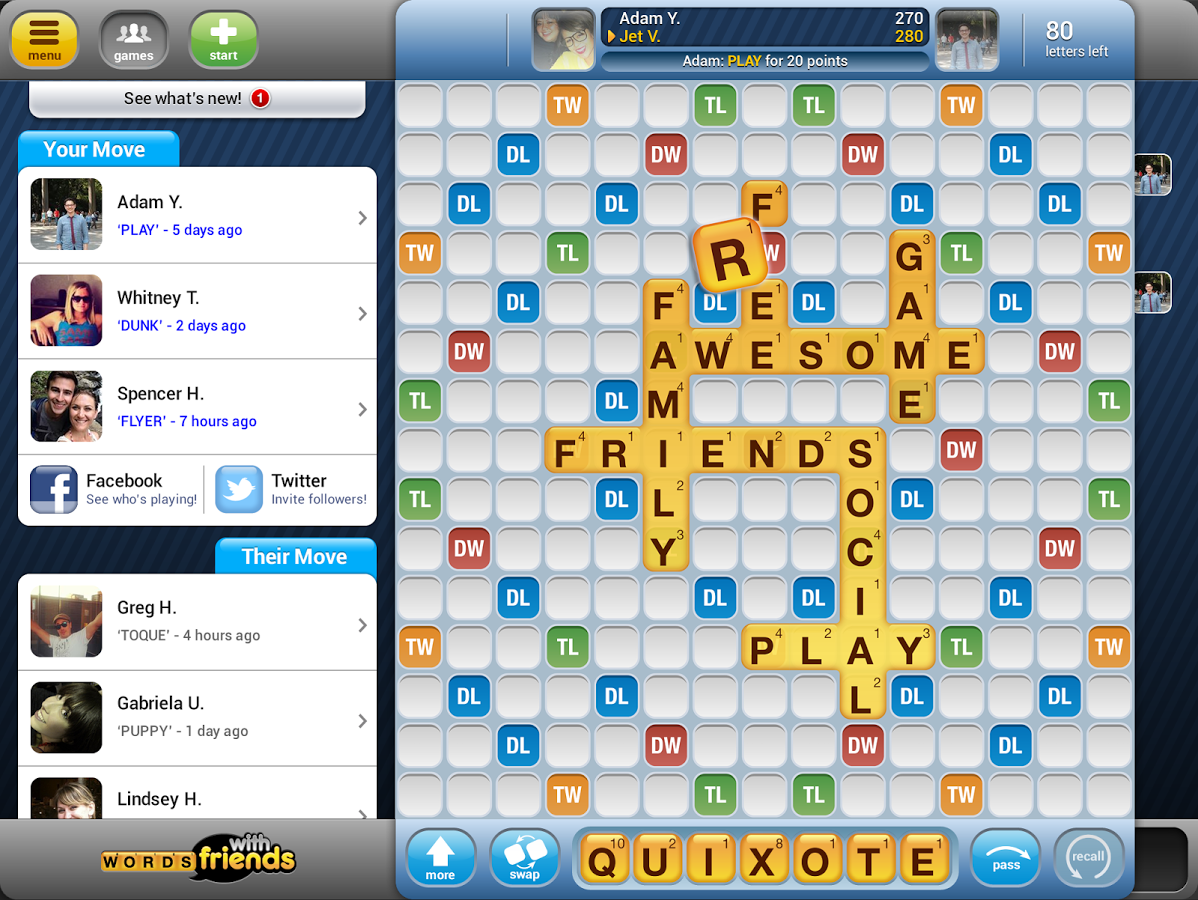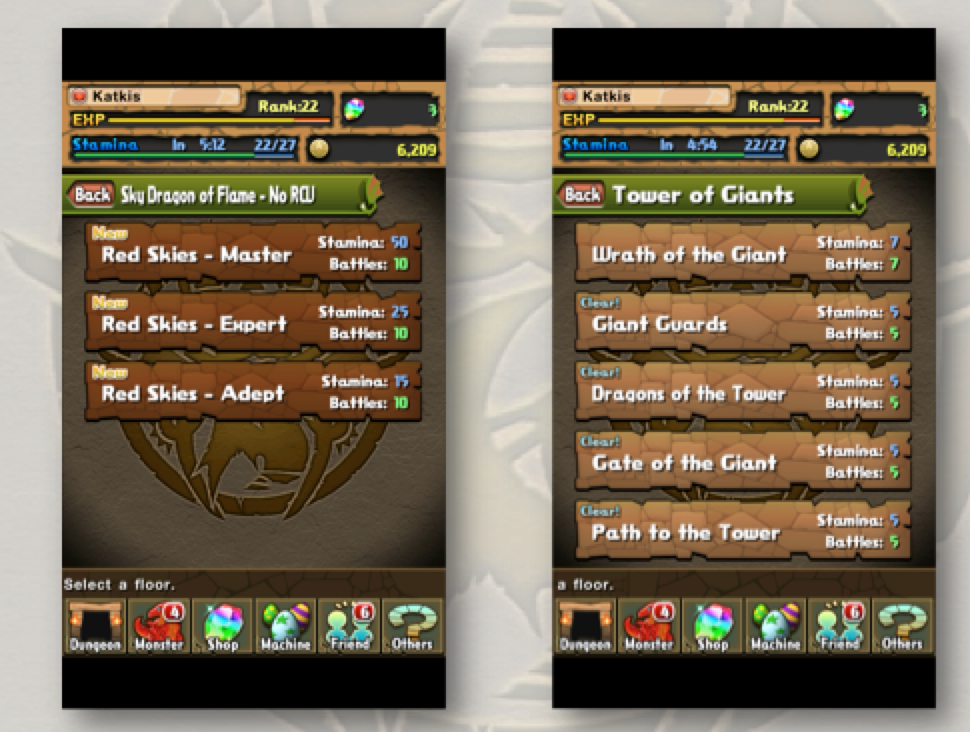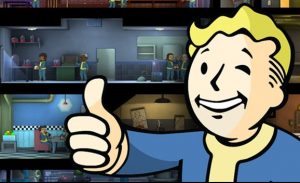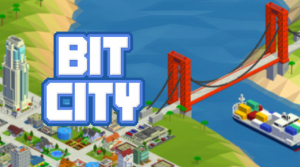Eliminating Energy
In my previous post Understanding Energy I explained the reasons that designers include energy systems in their games:
- Habituation
- Content Pacing
- Monetisation
- Strategic Choices
I also noted that energy systems aren’t particularly elegant systems – they rarely blend well with the setting of the game, and this disconnect makes them disliked by players. Removing or eliminating energy systems from mobile games is no easy task. There are some directions that bear consideration and further investigation though.
Pacing through quests
Energy systems pace players by limiting the amount that they can play. This clearly prevents players progressing too fast through a game’s content. However, it is possible to limit the rate of progression directly, whilst leaving play unlimited. The way to do this is to decouple the main source of rewards in the game from play, so that rewards can be limited independently of play time.
The best case of this is Hearthstone. Here the quest system is the main pacing mechanic, as it is the main way that players can earn in-game currency. Players get one new quest each day and each quest requires perhaps three to ten matches to complete. Once the player has exhausted their missions, they can continue playing for rank or pleasure, but their ability to earn coins is negligible and so the game economy is protected.
For most mobile games this route is likely to be the easiest and most satisfactory route to removing energy and timers.
Session length and synchronous PvP
Another way of pacing players is to increase the amount of play time required to progress. The pace that players can progress is then limited by the number of hours they can sink into the game. The big caveat to this is that it is much easier to do this on console / PC than on mobiles.
Mobile games are designed to fill the gaps in people’s days – when they are waiting for the bus, queuing for their coffee or avoiding work on the toilet. A mobile game needs to have a satisfying session possible in 1-3 minutes to fill these gaps. For a mobile game it is very difficult to give players a satisfying session in just a few minutes without bombarding them with rewards if they decide to play for a few hours – perhaps 50-60 sessions all in one go.
PC and console games have it easier as they are designed to be played in stretches of 2-3 hours at a time. A Hearthstone match lasts 5-15 minutes, whilst a League of Legends match lasts 30-45 minutes, so a few hours play is a handful of matches. This means that the base rate of progress can be extremely slow. These games get away with such slow progression because they rely heavily on synchronous PvP battles. The excitement of facing off against other people in real time compensates for slow progression in the meta game.
Mobile games typically have problems with synchronous PvP because people want to pick up and drop mobile games at any time, and there is little commitment to stick with match, which combined makes for a poor user experience. That said, World of Tanks Blitz has managed to be successful in spite of these challenges. Although the battles are typically only 4-6 minutes, the game still manages pace progression slow enough to avoid an energy system.
The problem that World of Tanks Blitz has is that whilst it covers off content pacing just fine, it monetizes very poorly compared to most other successful mobile games. Indeed seems unlikely World of Tanks Blitz would be successful without a PC product to support its brand awareness. 8 Ball Pool has also managed to be successful here with even shorter play sessions, but faces the same issue with revenue. Being the dominant digital version of a hugely popular real world game seems to be a major factor in 8 Ball Pool’s success.
Limited progression and asynchronous PvP
Another small set of mobile games have managed to be successful without energy systems by limiting the amount of progression available to players. Games such as Words with Friends and Draw Something offer players an asynchronous PvP experience that is incredibly viral, and where the costs of creating content are minimal.
As content is generated by other players, there is no need to limit play time. However, in order to keep the playing field fair and prevent the games becoming play to win, these games have very little to offer in terms of progression and hence to sell to players. Both Draw Something and Words with Friends rely heavily on in-game advertising to generate revenue as they have so little to sell themselves to players.
Framing
If eliminating energy altogether is not possible then framing it correctly to players can greatly improve the player experience. World of Warcraft experimented with their pacing system, primarily to habituate players into certain play patterns. Their initial mechanism halved the XP that players could earn after a certain point, encouraging them to end their session.
Players universally hated it. Blizzard responded by reframing the system, turning “normal” XP into “bonus” XP that still halved at exactly the same point, but now instead of dropping down to a penalized level, it just dropped something they called “normal” XP. Suddenly players loved the system; although the numbers were exactly the same players felt rewarded instead of punished.
In the same way, timers usually feel better than energy points. If it takes me a certain amount of time to build a building, travel somewhere or train troops then that fits with the narrative of the game and feels better than it costing energy, which appears to be (and is) an arbitrary cap on the amount I can play.
Another way to make energy feel better to players is to give players some control over it. Basically, make a game out of spending energy. In Brave Frontier and Puzzle & Dragons the amount of energy that each levels costs differs. Players have to figure out how best to spend their energy, and not leave a small amount left over and wasted.
In Boom Beach players only need to train troops if their troops die in combat. Players can therefore attack lots of different opponents in the same session, as long as they pick them carefully. The game is obviously balanced to players playing in this way, but they feel a lot smarter because of the control they have over the timers presented to them.
Conclusion TL;DR
Eliminating energy is not an easy design challenge for mobile games. Pacing player rewards is one obvious route that more games should investigate. Some games may be able to rely on PvP play and user generated content to limit the rate of progression, though monetizing these games is generally a challenge. For many games the best they will be able to do is to frame their energy systems in ways that make them more palatable to players.





